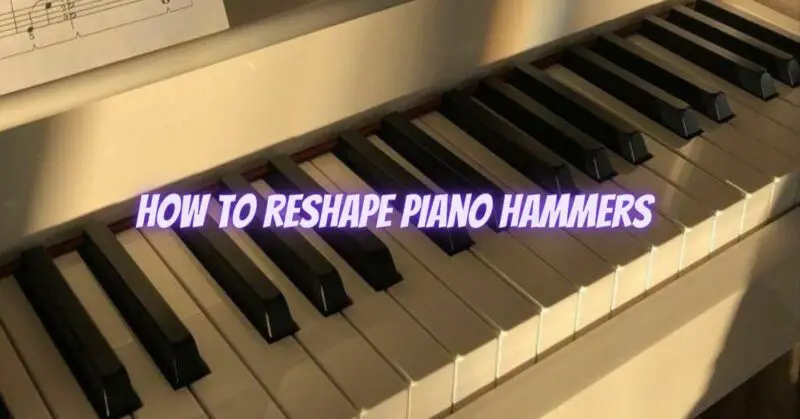Over time and with extensive use, piano hammers can lose their original shape and tonal brilliance. Reshaping piano hammers is a delicate and precise process that aims to restore the hammers to their optimal condition. When performed by a skilled piano technician, reshaping hammers can improve touch sensitivity, tonal quality, and overall performance. In this article, we’ll explore the process of reshaping piano hammers step-by-step.
Step 1: Evaluation Before reshaping the hammers, a thorough evaluation of the piano’s condition is essential. A qualified piano technician will examine the hammers to identify any issues that may require reshaping, such as grooves, flattening, or unevenness.
Step 2: Voicing Before reshaping, it is crucial to voice the hammers. Voicing involves needling the hammer felt to adjust its density and hardness. This process helps achieve a balanced and consistent tone across all notes. Voicing is an integral part of hammer maintenance and significantly impacts the piano’s overall sound.
Step 3: Reshaping the Hammers The reshaping process begins with carefully sanding the hammers to remove any grooves or unevenness. The technician uses sandpaper with varying levels of grit, depending on the severity of the hammer’s condition. The goal is to create a smooth and even surface on the hammers.
Step 4: Achieving Proper Geometry During reshaping, the piano technician ensures that the hammers regain their proper geometry. The hammer’s crown, which is the rounded part of the hammer that strikes the strings, is meticulously shaped to restore its original curvature. This step is crucial as it directly affects the hammer’s contact with the strings and, subsequently, the piano’s tone.
Step 5: Tone Regulation After reshaping, the technician may further fine-tune the hammer’s tone using voicing techniques. This step involves adjusting the hammer’s density and hardness to achieve the desired tonal characteristics. Tone regulation aims to produce a harmonious and consistent sound throughout the piano’s entire range.
Step 6: Check and Test Once the hammers are reshaped and voiced, the technician performs extensive checks and tests. Each hammer’s weight, shape, and tonal response are carefully assessed to ensure uniformity and quality. The technician also checks the touch sensitivity and dynamic range of the piano to verify that it meets the player’s expectations.
Step 7: Final Adjustments As with any piano maintenance process, the final step involves making any necessary adjustments based on the pianist’s feedback. The technician carefully listens to the piano’s sound and makes small tweaks to achieve the desired tonal brilliance and touch sensitivity.
Conclusion Reshaping piano hammers is a delicate and intricate process that requires a skilled and experienced piano technician. By restoring the hammers’ original shape and tonal brilliance, pianists can experience improved touch sensitivity and an enriched musical experience. Regular maintenance, including voicing and reshaping when necessary, ensures that the piano’s hammers remain in optimal condition, allowing the instrument to deliver its full potential of beauty and expressiveness.


